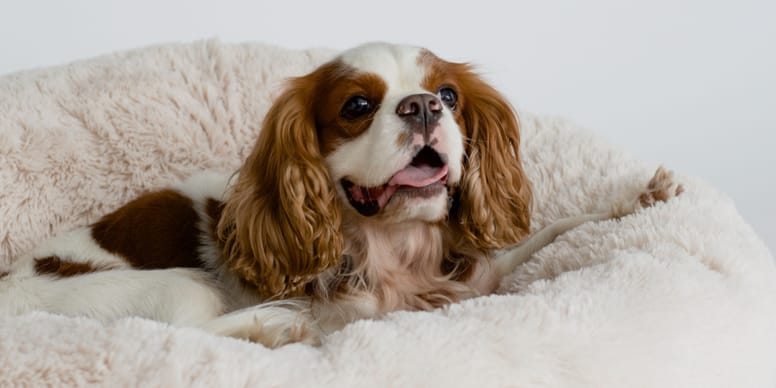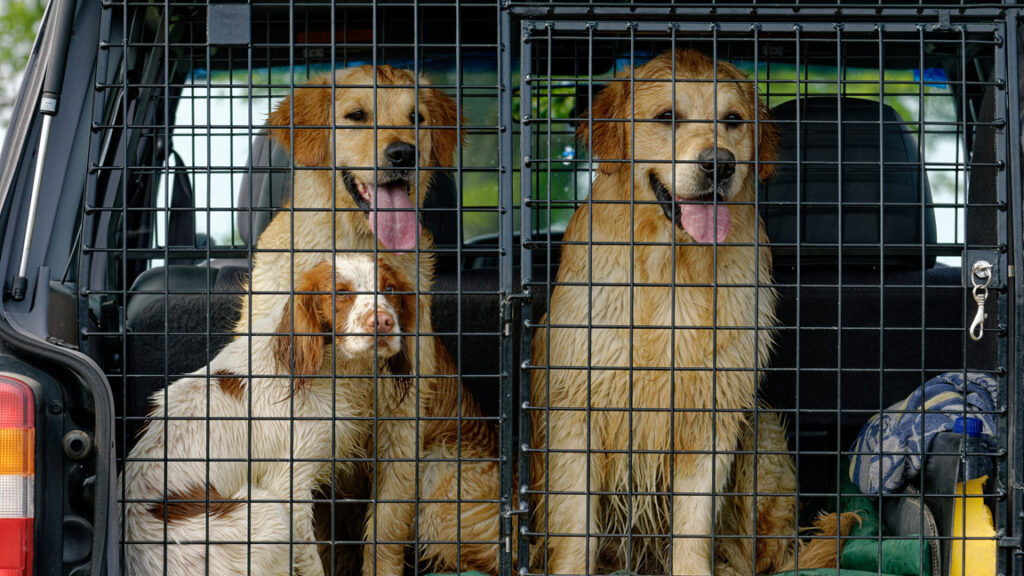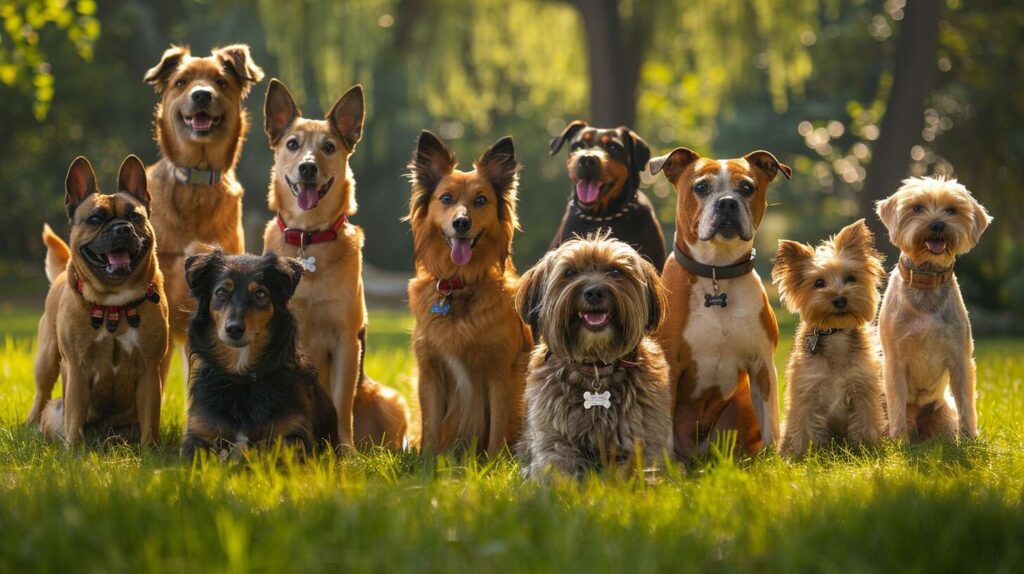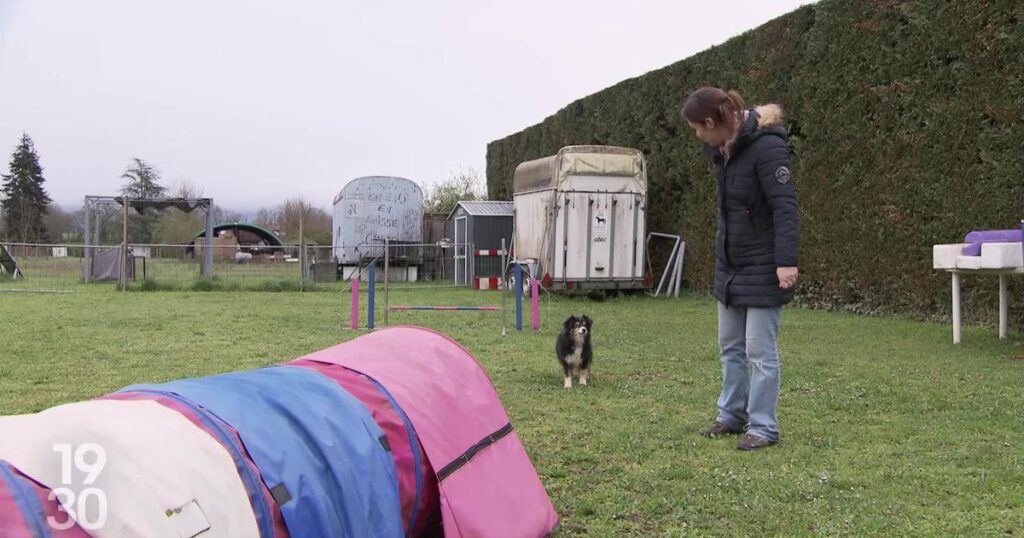
When a female dog goes into heat, she goes through different phases that make her suitable for breeding. However, around 25% of female dogs present so-called “atypical” heat, characterized by variability in their sexual cycle. During this process, many physiological and behavioral manifestations occur. It is essential to understand heat in order to manage your pet's reproduction or to ensure its health. How do dogs go into heat? What are the different phases of the sexual cycle in females? In this article, discover all the aspects of this essential period in your pet's life.
Dog heat: what is it?
Heat, or estrus, is a fundamental stage in the reproduction of female dogs. This process is closely linked to the canine sexual cycle, and it is essential to understand it to ensure the well-being of your pet.
During this cycle, his body undergoes significant hormonal changes. Heat represents the phase of a female dog's life when she is ready to breed. She starts looking for males, which is reflected by physiological and behavioral signs. It is therefore important for pet owners to know how to manage this period, which occurs on average twice a year.
It is essential to know when your dog goes into heat, not only for her well-being, but also to avoid unwanted pregnancies. The signs of heat are both physical and behavioral.
Physical changes in the female dog in heat
- Swollen vulva : the swelling of the vulva is sometimes impressive. The edema may be accompanied by a red color.
- Bloody vaginal discharge : from the start of the heat, losses are observable at the level of the vulva. Often described as light bleeding, it is one of the most obvious signs of this period.
- Swelling of the udders : at the end of the heat, it is not uncommon to observe swelling of the udders. This phenomenon can occur following a projection, while gestation begins, or in the case of a nervous pregnancy.
Behavioral changes in the female dog in heat
- Acceptance of overlap : the female dog actively seeks out dogs in heat and accepts their advances.
- Rejecting or aggressive behavior : some females in heat adopt aggressive behavior towards other dogs, whether male or female. This behavioral variability is specific to each individual.
- Characteristic posture : females tend to spread their hind legs and position their tail to the side, a sign of acceptance from the male.
These physical and behavioral changes are key indicators of the female dog's reproductive cycle. It is essential for owners to carefully observe their pet during this period in order to better manage its specific needs.
Good to know: it is important to note the start of heat as soon as you spot it. This allows you to anticipate when the female dog will be receptive to mating. This is also the time to take steps to prevent unwanted pregnancy, such as removing males or sterilization.
Pattounes in your mailbox?
Let's go !
When does a dog's first heat appear?
The onset of the first heat marks the beginning of the animal's sexual maturity. The exact time a female dog goes into heat depends on several factors, including her breed and size.
On average, the first heat in dogs generally occurs between 6 and 24 months, with an average age of between 10 and 14 months. However, there is considerable variability from one female dog to another.
Smaller breeds tend to go into heat early. This is because it is essential to gain sufficient growth before entering this crucial phase. The differences are striking:
- Small breeds can have their first heat as early as 5-6 months old.
- Medium-sized breeds experience puberty around 6-8 months of age.
- Large breeds, on the other hand, generally reach puberty between 12 and 15 months of age.
- Puberty occurs later in giant breeds and molossoids, usually between 18 and 24 months of age.
In addition to size, genetic and environmental factors can also influence the timing of the onset of the first heat. Females from specific breed lines may come into heat earlier or later than average.
The first heat marks an important milestone in your dog's life, but it doesn't necessarily mean she's ready to breed. In fact, it is strongly recommended to wait until the female dog is more mature before considering breeding. The ideal age for breeding depends on individual factors, but is generally between 18 months and 2 years. This helps ensure the best possible health for the mother and future puppies.
In fact, at the time of puberty, the female dog's growth is not yet complete. Consequently, her fertility remains limited, and it is strongly advised not to put her in a breeding situation at this stage. One sign that can help identify a pubescent female dog is the appearance of her vulva, which often shows differences from an immature female dog.
The female dog's reproductive cycle is a complex process that can seem mysterious to many pet owners. However, understanding this cycle is essential to caring for your furry friend and avoiding unwanted situations. This cycle is divided into several key phases:
- Proestrus : this phase lasts on average 5 to 10 days. During this period, the dog shows external signs of heat, including bloody vaginal discharge. However, she is not yet ready to breed and may show guarded behavior towards males.
- Estrus : main heat phase, it lasts 7 to 13 days. This is the time when the female dog is receptive to mating.
- Diestrus : this transition period follows estrus. The female dog is less receptive to mating and her behavior is closer to normal.
- Anestrus : this is a period of rest between each breeding cycle, during which the female dog is not receptive to mating.
These steps repeat approximately every 6 months, depending on the breed and individual characteristics of the female dog. However, the animal's reproductive cycle is centered on the presence or absence of successful mating. If the female dog is not mated, she returns to anestrus. On the other hand, if reproduction has taken place, it enters a state of gestation.
What factors can impact the duration of female dogs’ heat?
As said previously, the duration of heat in a female dog varies depending on several factors:
- Breed and Genetics : Some breeds are known to have shorter cycles, while others may have longer heats. Thus, the German Shepherd goes into heat every 4-5 months, while the Mexican hairless dog goes into heat once a year.
- Age : the age of the dog at the time of her first heat can impact their duration. Young female dogs sometimes have shorter heats, which become longer as they mature.
- Health : a female dog in good physical condition will have more regular cycles than a female in poor condition. Underlying health conditions can disrupt the cycle.
- Environmental factors : seasonality or the level of stress disrupt the duration of heat. For example, many female dogs go into heat in early spring.
- Weight : Overweight or malnourished female dogs are likely to have irregular cycles. A balanced diet is essential to maintain a normal cycle.
Careful monitoring of the female dog during heat is also essential to spot any possible abnormalities or complications. If you have any doubts, it is best to consult a veterinarian, who will provide you with appropriate advice.
What are the atypical heats in dogs?
If the sexual cycle of female dogs generally follows a well-defined pattern, around 25% of them experience heat periods that are considered atypical. These situations include:
- Silent heat : they often go unnoticed due to the discretion of the clinical signs (vulva slightly swollen, little vaginal discharge). This is often the case with the first heat in young female dogs.
- Persistent heat : certain pathologies cause abnormally long heat periods (4 to 6 weeks). This dysfunction is frequently encountered in elderly females and requires veterinary consultation.
- Inhibited or synchronized heat : they concern animals living in communities, such as packs of hunting dogs. One female dog's heat can trigger or inhibit that of others.
- Fractional heats : in young female dogs, the first heat starts normally before stopping abruptly after 8-10 days. The heat then resumes 2 to 10 weeks later. You will have to wait 2 or 3 cycles before everything returns to normal.




